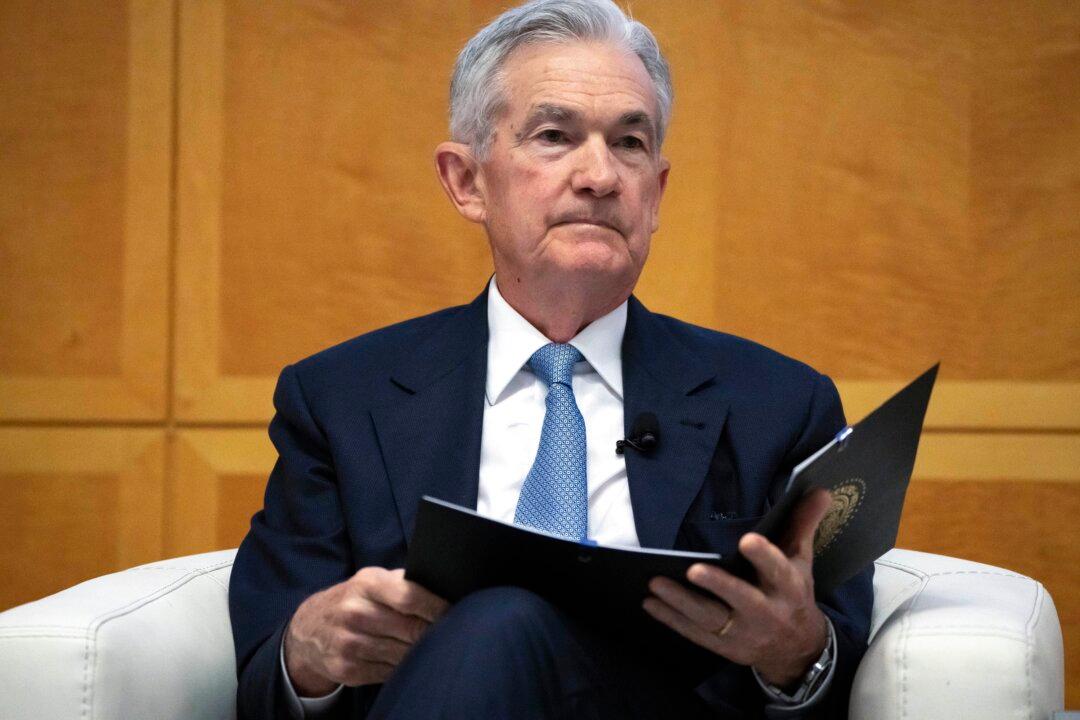The meeting summary alluded to immense uncertainty regarding how the rate cuts will happen if they occur at all.
“In discussing the policy outlook, participants viewed the policy rate as likely at or near its peak for this tightening cycle, though they noted that the actual policy path will depend on how the economy evolves,” the minutes stated.
There was some divergence in the path of interest rates. Nearly all meeting participants indicated that their baseline projections for a lower policy rate would be appropriate by the end of 2024. At the same time, some officials noted that economic conditions might support keeping interest rates at the present level longer than they thought, citing an “unusually elevated degree of uncertainty.”
The concern is that progress on inflation has been uneven, particularly since the widely watched core services prices are still climbing at an elevated pace.
“Many participants remarked that an easing in financial conditions beyond what is appropriate could make it more difficult for the Committee to reach its inflation goal.”
Comparable to previous statements, the FOMC minutes highlighted that officials are taking “a careful and data-dependent approach to making monetary policy decisions.”
The document “reaffirmed that it would be appropriate for policy to remain at a restrictive stance for some time until inflation was clearly moving down sustainably toward the Committee’s objective.”
Staff economists’ outlook was similar to previous projections, although some meeting participants warned of downside risks to the economy emanating from the Fed’s restrictive position.
On the subject of winding down the Fed’s historically high balance sheet, officials discussed that it would be appropriate to slow down the runoff process when bank reserves “are somewhat above the level judged consistent with ample.”
Market Reaction
There was little reaction to the Fed minutes from the financial markets.The leading benchmark indexes were stuck in the red for the second consecutive trading session. Treasury yields see-sawed between positive and negative territory. The U.S. Dollar Index (DXY), a gauge of the greenback against a basket of currencies, surged for the second straight day, topping 102.60.
To Cut or Not to Cut
At the final FOMC meeting of 2023, Fed officials signaled three rate cuts in 2024, lowering the median policy rate to 4.6 percent, according to the Summary of Economic Projections (SEP).However, since Fed Chair Jerome Powell’s post-meeting press conference, a chorus of central bank officials stated that it was “premature” to start discussing rate cuts. Mr. Powell had presented the same argument just days before the updated SEP data.
John Williams, the head of the New York Fed, revealed in an interview with CNBC on Dec. 15 that “we aren’t really talking about cutting interest rates now.”
“If we get the progress I am hoping to see on inflation and the economy, then, of course, it will be kind of natural to move monetary policy over a period of a few years to a more normal level,” Mr. Williams added.
Atlanta Fed President Raphael Bostic noted that he only expects a couple of rate cuts this year, beginning sometime in the third quarter.
According to the CME FedWatch Tool, the futures market anticipates that the Fed could start loosening monetary conditions as early as the March FOMC policy meeting.
Richmond Fed chief Tom Barkin told the chamber of commerce in Raleigh, North Carolina, on Jan. 3 that the timing and pace of adjustments to interest rates will ultimately depend on the economic data. This would also potentially include rate hikes.
“There’s no autopilot,” Mr. Barkin said. “So I can’t give more guidance from the flight deck. Forecasting is difficult, and conditions are ever-evolving.”
“I would caution you to focus less on the rate path and more on the flight path—is inflation continuing its descent and is the broader economy continuing to fly smoothly? Conviction on both questions will determine the pace and timing of any changes in rates,” he added.
But while the Fed signaled just three rate reductions, other analysts see a lot more amid a slowing economic landscape.
ING economists forecast six quarter-point rate cuts beginning in May.
Deutsche Bank’s baseline suggests rate cuts starting in June and totaling 175 basis points.
“The lagged impact of previous monetary policy tightening should push GDP growth well below potential in the coming quarters,” Jennifer McKeown, the chief global economist at Capital Economics, wrote in a note. “This should help bring core inflation back to target by mid-2024, prompting the Fed to cut rates by more than investors anticipate, starting in March.”
The next two-day policy meeting will take place on Jan. 31 and Feb. 1. Investors are penciling in another rate pause, leaving the benchmark fed funds rate at a range of 5.25 percent and 5.50 percent.







